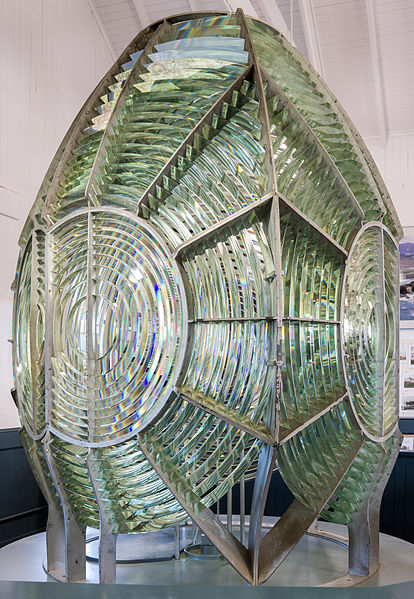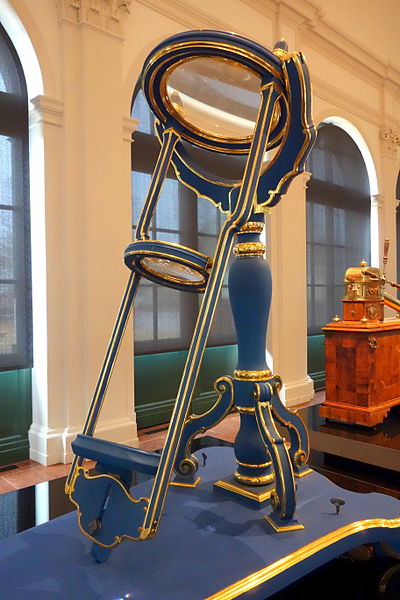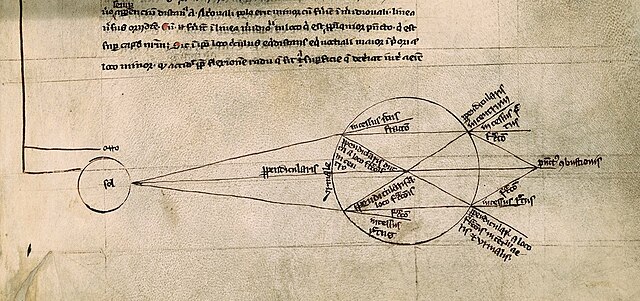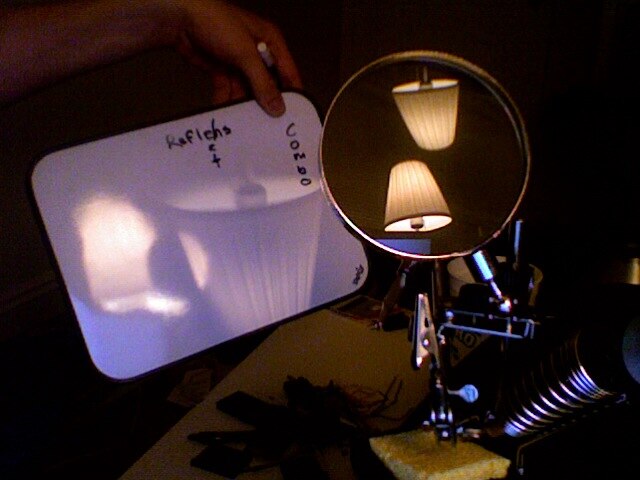A Fresnel lens is a type of composite compact lens which reduces the amount of material required compared to a conventional lens by dividing the lens into a set of concentric annular sections.
First-order rotating catadioptric Fresnel lens, dated 1870, displayed at the Musée national de la Marine, Paris. In this case the dioptric prisms (inside the bronze rings) and catadioptric prisms (outside) are arranged to concentrate the light from the central lamp into four revolving beams, seen by sailors as four flashes per revolution. The assembly stands 2.54 metres (8.3 ft) tall and weighs about 1.5 tonnes (3,300 lb).
First-order group-flashing Fresnel lens, on display at the Point Arena Lighthouse Museum, Point Arena Lighthouse, Mendocino County, California. The three dioptric panels (inside the brass rings) and three catadioptric panels (outside) are partly split in two, giving three double-flashes per rotation.
Close-up view of a flat Fresnel lens shows concentric circles on the surface
Makapuu Point Light
A lens is a transmissive optical device that focuses or disperses a light beam by means of refraction. A simple lens consists of a single piece of transparent material, while a compound lens consists of several simple lenses (elements), usually arranged along a common axis. Lenses are made from materials such as glass or plastic and are ground, polished, or molded to the required shape. A lens can focus light to form an image, unlike a prism, which refracts light without focusing. Devices that similarly focus or disperse waves and radiation other than visible light are also called "lenses", such as microwave lenses, electron lenses, acoustic lenses, or explosive lenses.
A burning apparatus consisting of two biconvex lens
Light being refracted by a spherical glass container full of water. Roger Bacon, 13th century
Lens for LSST, a planned sky surveying telescope
Real image of a lamp is projected onto a screen (inverted). Reflections of the lamp from both surfaces of the biconvex lens are visible.








